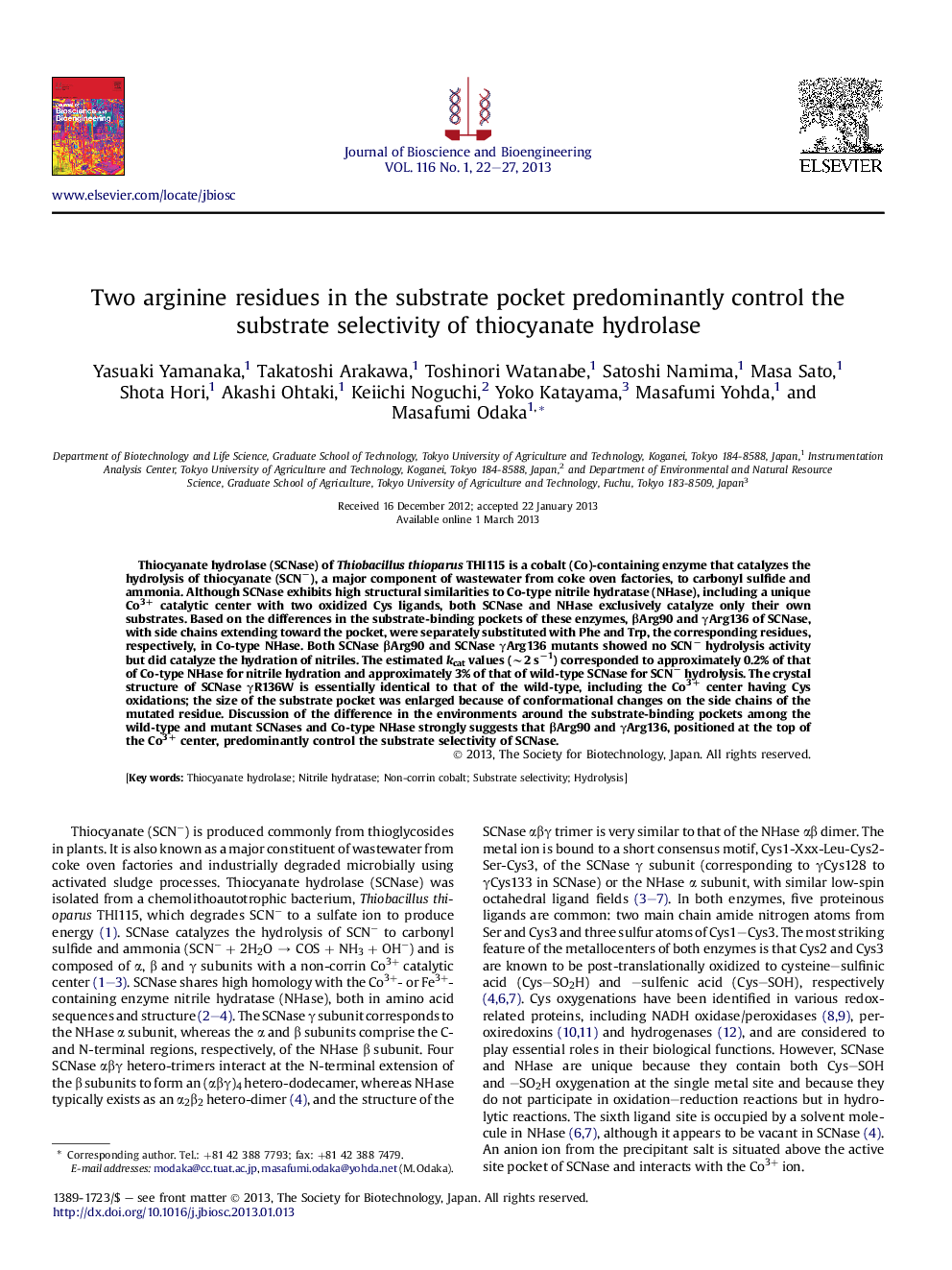| کد مقاله | کد نشریه | سال انتشار | مقاله انگلیسی | نسخه تمام متن |
|---|---|---|---|---|
| 20845 | 43194 | 2013 | 6 صفحه PDF | دانلود رایگان |

Thiocyanate hydrolase (SCNase) of Thiobacillus thioparus THI115 is a cobalt (Co)-containing enzyme that catalyzes the hydrolysis of thiocyanate (SCN−), a major component of wastewater from coke oven factories, to carbonyl sulfide and ammonia. Although SCNase exhibits high structural similarities to Co-type nitrile hydratase (NHase), including a unique Co3+ catalytic center with two oxidized Cys ligands, both SCNase and NHase exclusively catalyze only their own substrates. Based on the differences in the substrate-binding pockets of these enzymes, βArg90 and γArg136 of SCNase, with side chains extending toward the pocket, were separately substituted with Phe and Trp, the corresponding residues, respectively, in Co-type NHase. Both SCNase βArg90 and SCNase γArg136 mutants showed no SCN− hydrolysis activity but did catalyze the hydration of nitriles. The estimated kcat values (∼2 s−1) corresponded to approximately 0.2% of that of Co-type NHase for nitrile hydration and approximately 3% of that of wild-type SCNase for SCN− hydrolysis. The crystal structure of SCNase γR136W is essentially identical to that of the wild-type, including the Co3+ center having Cys oxidations; the size of the substrate pocket was enlarged because of conformational changes on the side chains of the mutated residue. Discussion of the difference in the environments around the substrate-binding pockets among the wild-type and mutant SCNases and Co-type NHase strongly suggests that βArg90 and γArg136, positioned at the top of the Co3+ center, predominantly control the substrate selectivity of SCNase.
Journal: Journal of Bioscience and Bioengineering - Volume 116, Issue 1, July 2013, Pages 22–27